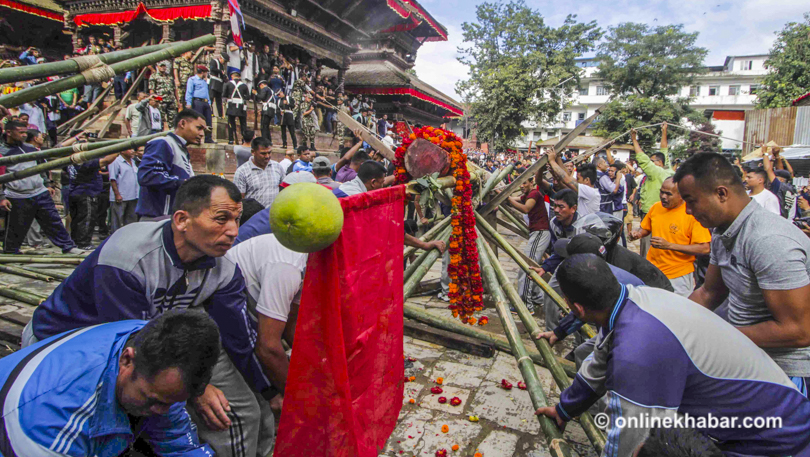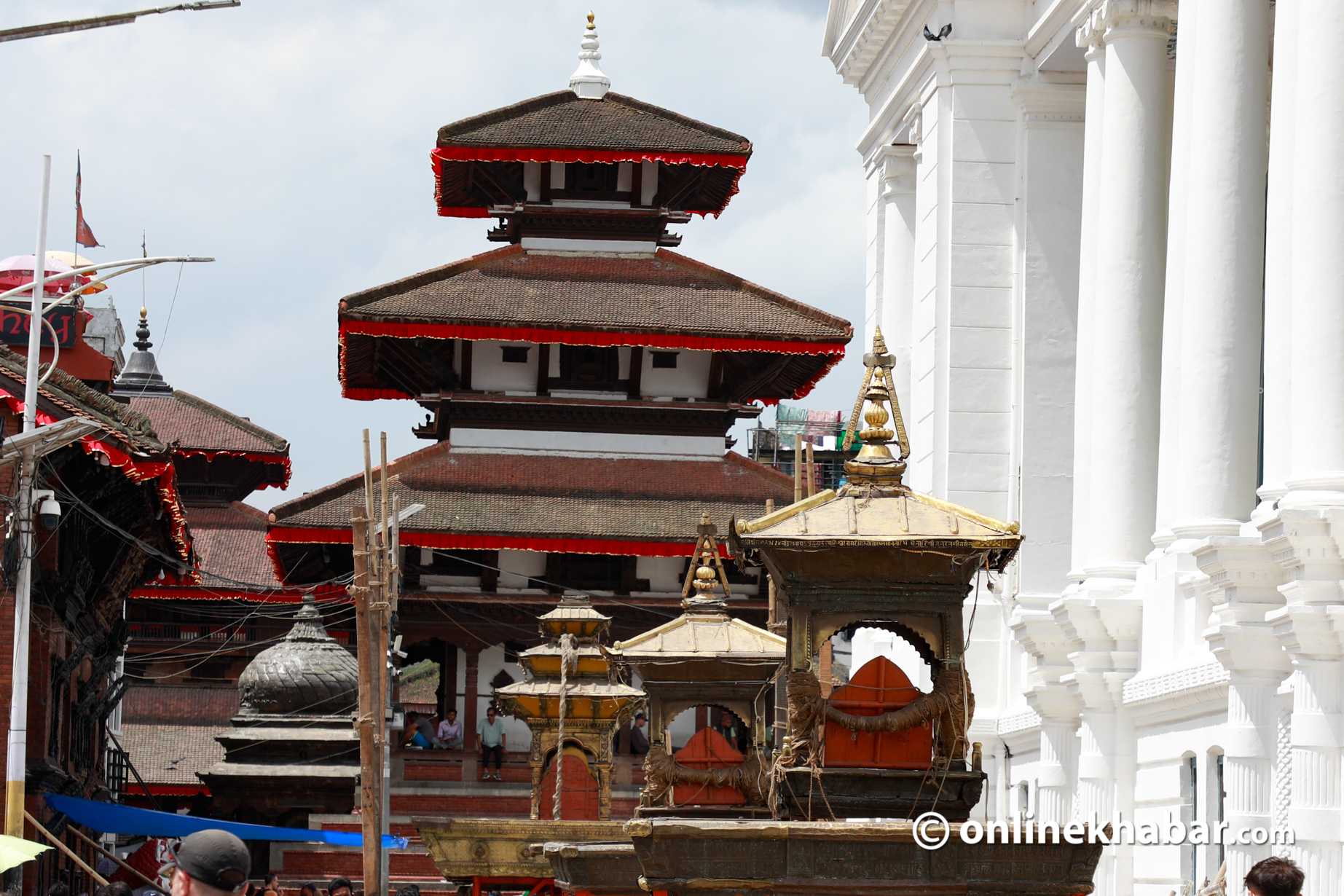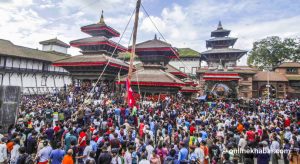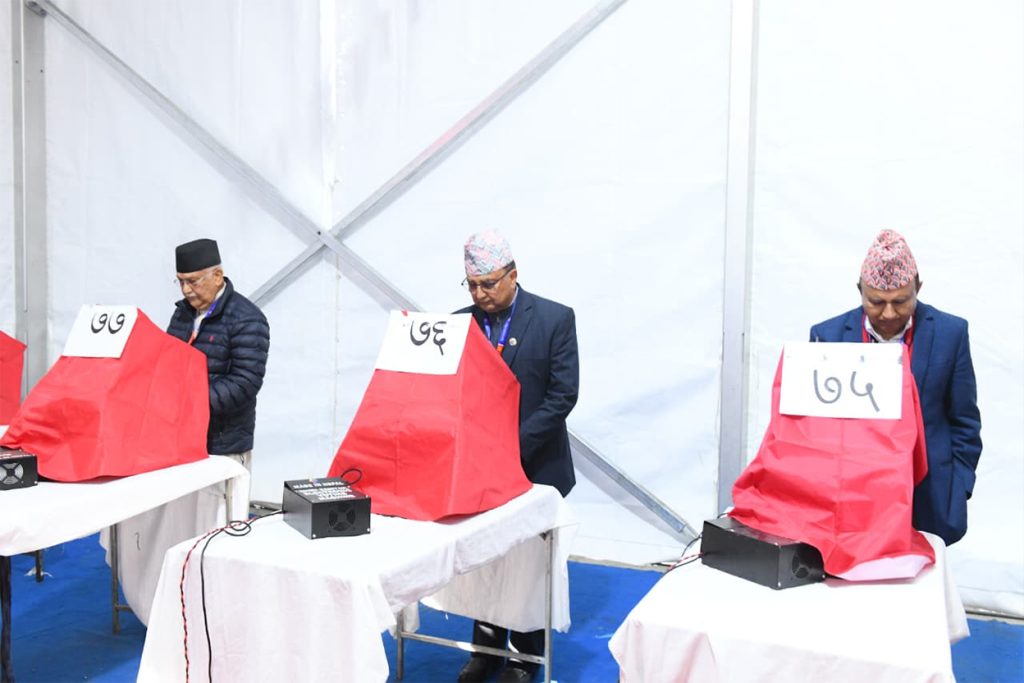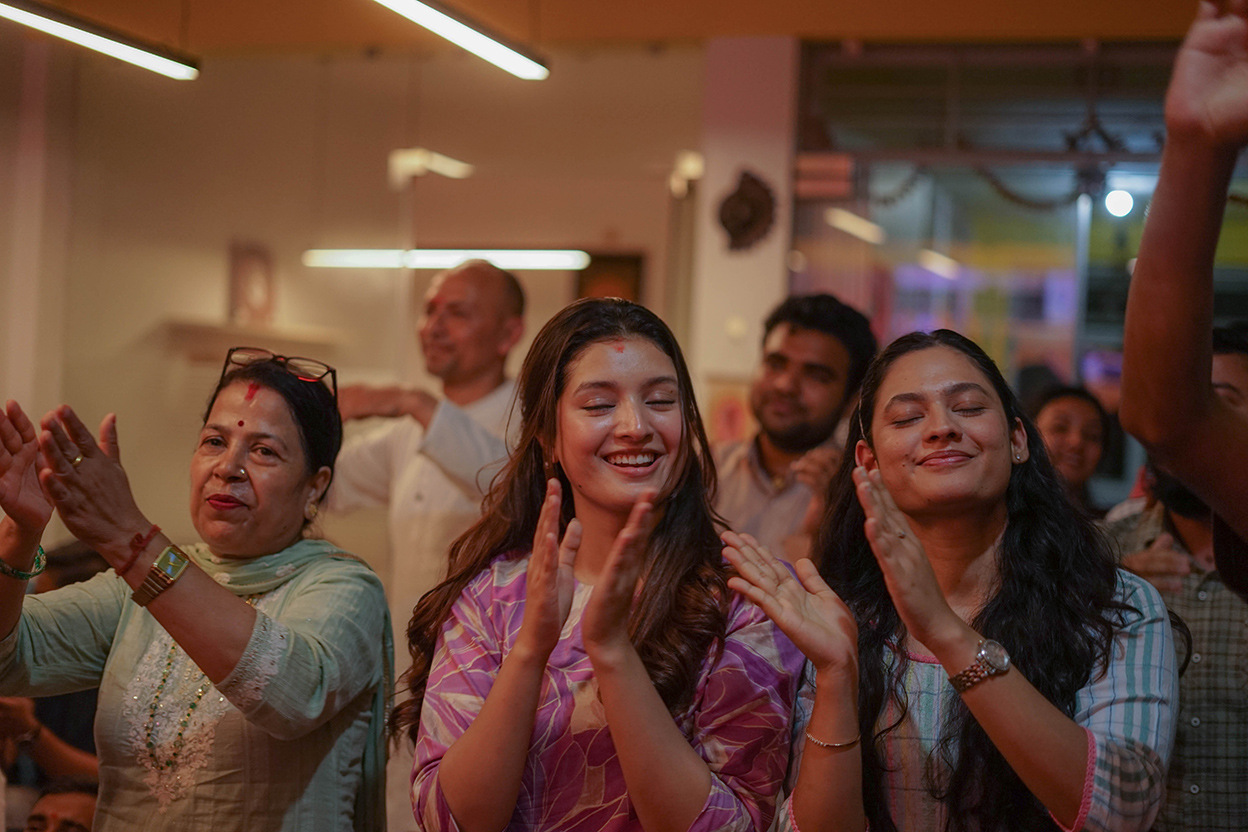
As soon as the monsoon ends, Kathmandu Valley gears up for a number of festivals. The first among them is Indra Jatra.
Clear skies bring enthusiasm amongst the people of the Valley who gear to celebrate this eight-day Indra Jatra festival with a great deal of vigour and passion.
Indra Jatra has never been restricted to being a mere public formality. It is celebrated as a religious ceremony which concerns both urban and rural societies.
To understand the Indra Jatra festival better, here are seven things that surround this ancient old festival which you may not have known yet.
1. Three festivals merged into one
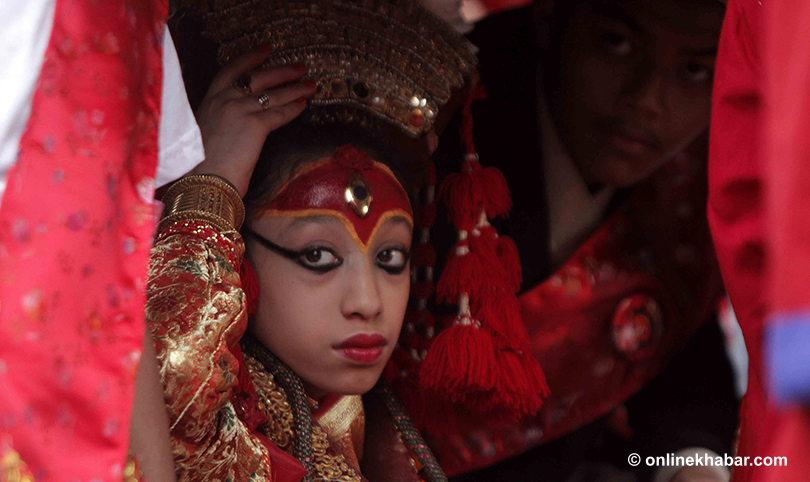
Indra Jatra is made up of three series of festivals, each concentrating on one specific god – Indra, Kumari and Bhairav. Initially, all three festivals existed independently and were joined together at a later stage.
The Indra Jatra is the oldest part of this festival which dates back to the 11th century. Kumari Jatra was later added to this procession by Jay Prakash Malla. It is believed that he detached this festival from Maha Nawami and wanted to dedicate a different day for Kumari (Living Goddess). Malla felt that this would strengthen the Malla dynasty which was under attack from the Shah dynasty in the late 1700s.
The origin of the Bhairav Jatra, however, is not known. It is difficult to ascertain if it was celebrated in the beginning or came at a later stage. The Sveta Bhairav’s head in Basantapur came into existence only after the Malla era when Rana Bahadur Shah decided to honour Lord Indra.
2. Vasundhara’s cheeky ploy
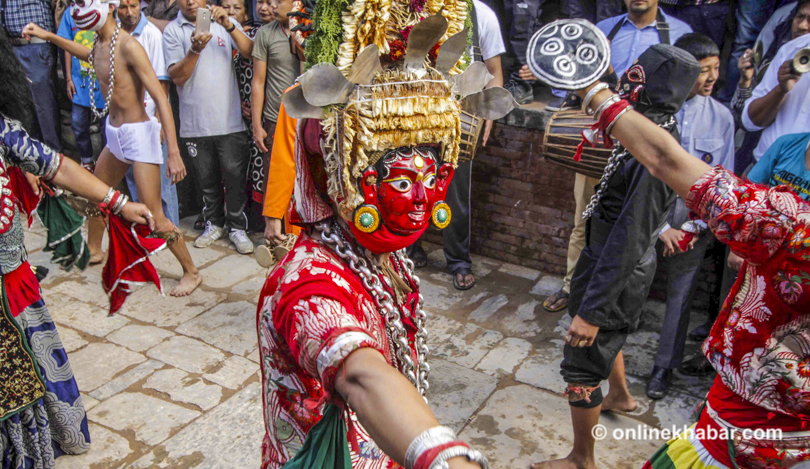
According to another legend, Indra’s mother Vasundhara came to Kathmandu disguised as a demoness in search of her son. When she found him in the palace bound up like a thief, she promised to ensure mist and dew for the winter crops in exchange for his release. She also promised to lead the inhabitants of Kathmandu to heaven to meet their deceased relatives.
While the people heard this, they quickly released Indra and followed her when she departed with her son. But when they reached the top of the hill, from which they were to ascend to heaven, she informed them that they couldn’t go to heaven without purifying themselves in a pond known as Indra Daha. While the people were bathing in the pond, they were shrouded by a thick mist. Taking advantage of that, she escaped to heaven with Indra.
3. Connection with India
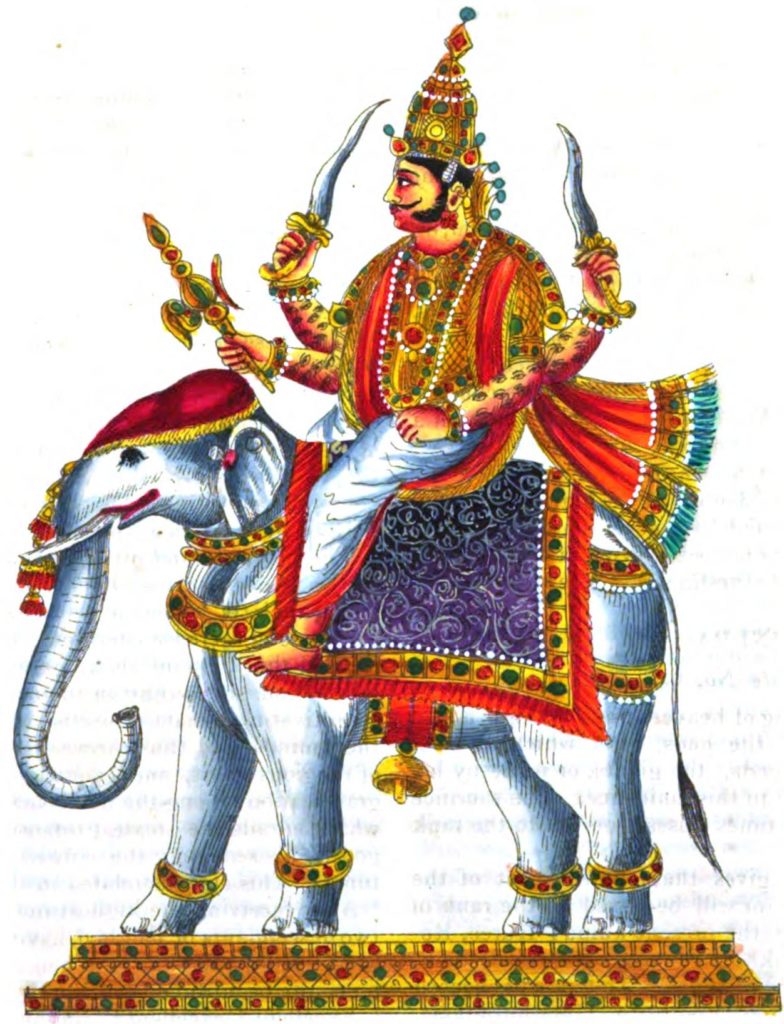
There are many instances in holy books of a similar festival being celebrated in India to honour Lord Indra, called the Indramahotsava. Like in Nepal, rulers in India worshipped Indra too.
The festival was celebrated around the same time in both countries. In India, they select a tree for the ‘lingo’ like in Nepal. However, the major revellers are Brahmins, not Newars, there.
In Kathmandu, the tree is then immersed in the water and then brought to the capital where the procession takes place. The festival is celebrated for 12 days, after which the pole is lowered and taken to a nearby river with the help of an elephant.
The festival is also quoted in the Mahabharata, in which this religious feat was initiated by a religious king called Vasu.
4. The pole and banner of Indra

Everyone knows about the pole (yashi) which is brought from Nala in Kavre. But while erecting the pole of Indra Jatra, a banner is placed on the 60 feet high pole which is known as Hari Patah. It is kept inside the old Malla palace of Hanuman Dhoka throughout the year.
The banner has eight signs of good luck, also known as asta mangal. The pole also has branches and fruits, mostly bhogate which is the symbol of fertility. Along with it, a small national flag is fixed on the top of the pole.
The banner is commonly referred to as the Indradhvaja and the pole raising ceremony is called Indradhvajotthana.
5. Choosing the pole (lingo)
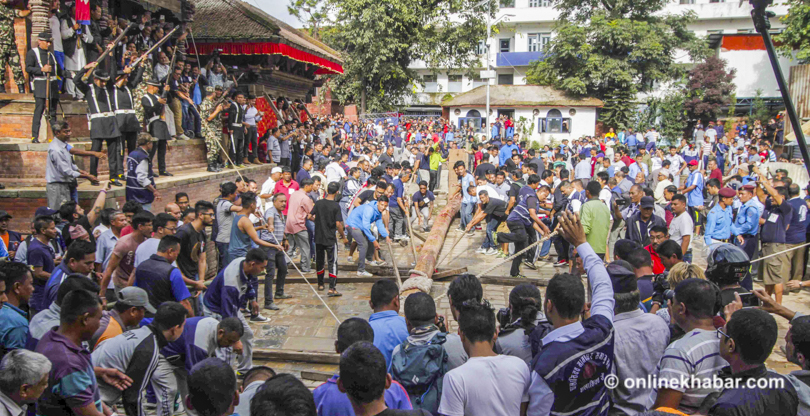
Traditionally, it was the Manandhar caste who cut the pole for Indra Jatra from a sal tree in a small forest in Nala, Kavre. A goat was set free in the forest and the tree against which the goat rubbed its back was chosen. With time, the rituals have been simplified and the selection of the tree and its transport has been given to another caste group. But the tree is cut a month before the festival and a goat is still sacrificed.
Currently, police recruits have been given this task.
6. The masked dances

Throughout the Indra Jatra festival, there are many masked dances are held around the core city area. The most popular one is the masked dance of Majipa Lakhe that goes around the town, with jhyalinchha.
Before the chariot procession of three-masked member Aakash Bhairav Naach (also known as Sawa Bhakku or jhin tali shin taa) from Halchok and Pulukisi, the resemblance of Airawat, can also be seen performing.
The performance of Dash Avatar is held at around 9 pm every night on the steps of the Laxmi Narayan temple, adjacent to Kumari Ghar.
Another major masked dance component is the Mahakali dance and Khya Pyakhan which are held in Hanuman Dhoka.
After the chariot procession, someone dressed as Dagini goes around the city, on the day of Kwaneyā, It goes around from Maru-Pyaphal-Yetkha-Nardevi-Tengal-Nhyokha-Nhyakan Tole-Asan-Kel Tole-Indra Chok-Makhan-Hanuman Dhoka-Maru-Chikanmugal-Jaisidewal-Lagan-Hyumat-Bhimsensthan-Maru.
Another procession at night is Paya, a few masked men, carrying khadgas (a kind of weapon/sword) go around the city.
7. Bhaktapur’s Indra Jatra

As in Kathmandu, Bhaktapur also erects ceremonial poles to signify the start of the festival. The poles are placed at several places in Bhaktapur and the lingo is taken as the symbol of Yama, the god of death. The ceremonial pole event is known as Yama Dya; Thanegu,
Devotees visit Narayan temples on the third day of the procession and many observe this day by sowing tulasi.
The procession ends at the biggest humanmade pond of Bhaktapur named Ta: Pukhu (Siddhapokhari). It used to be called Indra Daha in ancient times. The festival ends where the statue of the Indrayani is left over there, overnight in an open building, a phalcha.
Bhaktapur also has Pulukisi, which is a bit different from that of Kathmandu. The Pulukisi is taken out for procession where it behaves rudely, causing problems.
Indra Jatra is also observed in some districts of Terai of Nepal as Indra Puja. According to the local traditions, rituals are different from those in the Kathmandu valley.
Originally published on September 24, 2018








